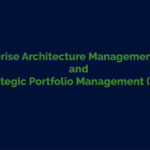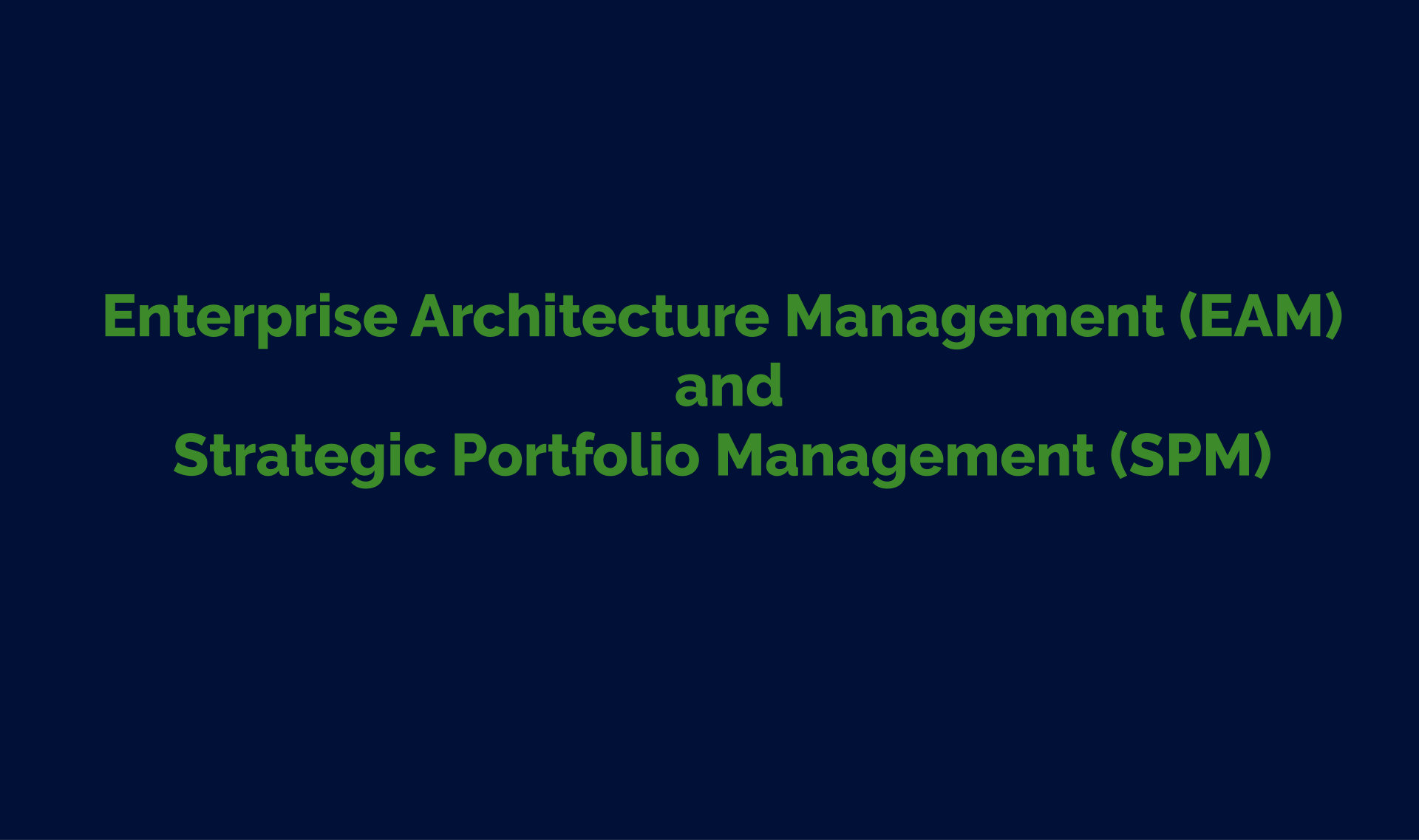Enterprise Architecture Management (EAM) and Strategic Portfolio Management (SPM) are two critical components of business management that focus on aligning organizational goals with technology solutions to drive growth and success. In this blog, we will explore what EAM and SPM are and how they can benefit organizations.
Enterprise Architecture Management (EAM): EAM is a management discipline that helps organizations develop and maintain a strategic view of their IT assets. It involves designing and implementing a set of standards and processes that ensure that IT systems and processes align with the organization’s goals and objectives. EAM provides a framework for managing IT assets, such as software, hardware, data, and applications, to ensure they are consistent with the organization’s overall strategy. It is a comprehensive approach to managing technology that involves evaluating the current state of IT assets, identifying gaps, and creating a roadmap for future investments.
The benefits of EAM include:
- Improved Alignment: EAM helps align IT investments with business goals, ensuring that technology supports the organization’s overall strategy.
- Enhanced Agility: EAM provides a framework for managing technology that enables organizations to respond quickly to changing business needs.
- Increased Efficiency: EAM helps eliminate duplication and redundancy in IT systems and processes, reducing costs and increasing efficiency.
- Improved Governance: EAM provides a framework for managing IT assets that promotes accountability, transparency, and compliance with regulatory requirements.
Strategic Portfolio Management (SPM): SPM is a management discipline that focuses on optimizing the organization’s investment portfolio to align with business goals and objectives. It involves evaluating and prioritizing investment opportunities based on their alignment with the organization’s overall strategy, available resources, and risk appetite. SPM provides a framework for making investment decisions that balance risk and reward and maximize the organization’s return on investment.
The benefits of SPM include:
- Improved Decision Making: SPM provides a structured approach to investment decision making, ensuring that investments are aligned with the organization’s overall strategy.
- Better Resource Allocation: SPM helps organizations allocate resources more effectively by prioritizing investments based on their strategic importance and expected returns.
- Risk Management: SPM helps organizations manage risk by evaluating investment opportunities based on their risk profile and aligning investments with the organization’s risk appetite.
- Improved Performance: SPM helps organizations optimize their investment portfolio, resulting in improved performance and increased profitability.
In conclusion, EAM and SPM are two critical components of business management that help organizations align their IT assets and investment portfolio with their overall strategy. By implementing these management disciplines, organizations can improve alignment, agility, efficiency, governance, decision making, resource allocation, risk management, and performance, ultimately driving growth and success.







